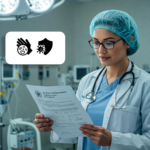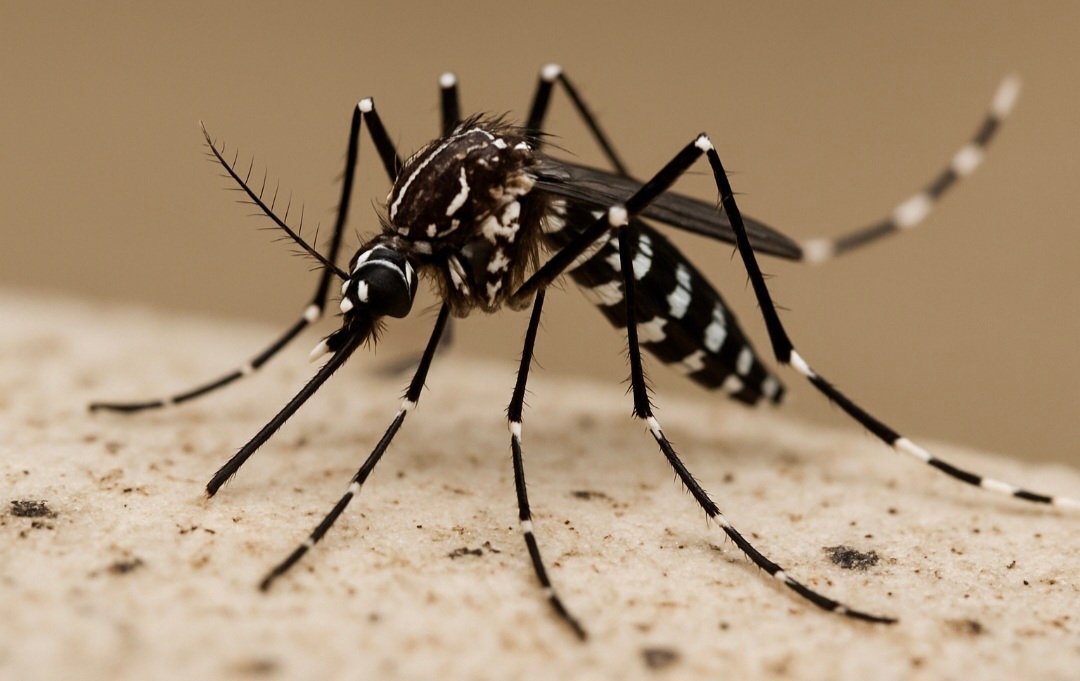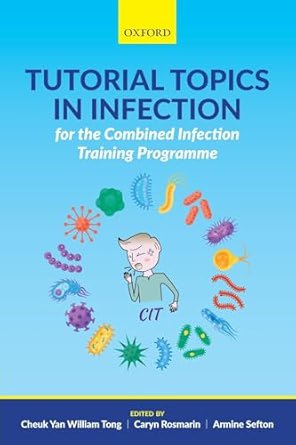Disclaimer: This post is for academic purposes only. Please read the original document if you intend to use them for clinical purposes.
This document summarises the WHO’s interim guidelines for Dengue virus laboratory testing, issued in April 2025 in response to a declared global dengue emergency in December 2023. It was developed by WHO in consultation with subject matter experts and involved a targeted literature review (January 2009-June 2024), prioritizing methodological rigor and relevance due to the urgent need and broad scope. It provides updated recommendations for laboratory testing and diagnostics, emphasizing the importance of timely and accurate diagnosis for patient management, surveillance, and outbreak investigation. It addresses the broad clinical manifestations of dengue, the complexity of diagnosing it amidst co-circulating arboviruses, and the need for tailored diagnostic algorithms based on regional endemicity and laboratory capacity. The guidelines highlight various testing methods, sample types, and the critical role of genomic surveillance in understanding and managing dengue outbreaks.
Context:
Dengue is a rapidly escalating global health crisis, with cases doubling annually since 2021 and expanding into new regions. In December 2023, the WHO declared a global emergency, reporting over 14 million cases and 10,500 deaths from 107 countries in 2024. The Americas region has borne the highest burden. This surge is attributed to a combination of environmental, social, and climatic factors, including rapid urbanization, population mobility, increased global travel, climate change, and weakened health systems due as a result of humanitarian crises.
A significant challenge is the co-circulation of Dengue virus with other arboviruses like Chikungunya and Zika, which share overlapping geographical distributions and clinical manifestations, complicating diagnosis. Furthermore, “antibodies induced after exposure to one orthoflavivirus may cross-react with antigens of other members of the genus, affecting the diagnostic interpretation of serological tests.” (p. 4)
Virus and Disease Characteristics:
Dengue virus (DENV) is a member of the Orthoflavivirus genus, transmitted primarily by Aedes aegypti and Aedes albopictus mosquitoes. It has four distinct serotypes (DENV-1, -2, -3, and -4), each with several genotypes. Infection with one serotype provides lifelong immunity against that specific serotype but only short-term cross-protection (8-12 months) against others.
Dengue illness ranges from asymptomatic to severe multi-organ dysfunction. While 40-80% of infections are asymptomatic, less than 5% develop severe, life-threatening conditions. Severe dengue can occur in both primary and secondary infections, though the risk is elevated in secondary infections due to antibody-dependent enhancement. Risk factors for severe disease include age (especially children), pre-existing chronic diseases, and ethnic background. Perinatal transmission is possible, and maternal IgG antibodies may increase severe dengue risk in infants aged 6-12 months.
Case Definitions :
- Suspected case: A person living in or traveling to dengue areas in the past 14 days with fever (2-7 days) and two or more clinical manifestations (nausea/vomiting, exanthema, headache/retro-orbital pain, myalgia/arthralgia, petechiae, leukopenia).
- Probable case: A suspected case with IgM detected in a single serum sample or an epidemiological link to a confirmed case.
- Confirmed case: A suspected case with DENV detected by NAAT, isolated by culture, NS1 antigen detection, seroconversion or 4-fold antibody titre increase, or viral genome/NS1 antigen detection in autopsy tissue.
Sample Types and Handling:
DENV can be detected in various samples, including plasma, whole blood, capillary blood, urine, cerebrospinal fluid (CSF), and tissue samples. Serum is the preferred sample type. Proper handling and storage are critical for accurate results.
- Serum: preferred. Refrigerate at 2–8°C for up to 48 hours; store at -20°C or lower for longer.
- Whole Blood (EDTA tubes): Store at 4–8°C for up to 24 hours. Avoid freezing. Heparin should be avoided for molecular methods as it interferes with RT-PCR.
- Capillary Blood: Used in resource-limited settings, for children, or during outbreaks. Often collected as dried blood spots or in Microtainers®.
- Urine: Can detect DENV. Refrigerate at 2–8°C for up to 24–48 hours.
- CSF: For encephalitic cases only. Analyze immediately or store at 2–8°C for a few hours. For long-term preservation, store at -70°C or lower (note: may affect antibody stability). Avoid freeze-thaw cycles.
- Tissue Samples: Optimal for DENV tissue testing (liver, kidney, spleen, lung). Process immediately; store at -80°C for long-term.
Dengue samples are classified as Category B – UN3373 “Biological substance,” while DENV cultures are Category A – UN2814 “Infectious substance affecting humans,” requiring strict biosafety protocols (Biosafety Level 2 for specimens, Biosafety Level 3 for live virus cultures).
Laboratory Testing Methods and Algorithm:
Dengue diagnosis requires selecting appropriate methods based on the stage of infection, dengue prevalence, co-infections, prior DENV or orthoflavivirus infections, and vaccination history. There is no universal consensus on the optimal diagnostic algorithm; it should be adapted to local context.
A. Acute Phase (0–7 days post-symptom onset):
- Nucleic Acid Amplification Tests (NAATs), primarily RT-PCR: detect DENV RNA.
- Highly sensitive and specific, with many RT-PCR assays capable of detecting and differentiating all four serotypes.
- Rapid results, potential for automation, can identify specific serotypes.
- Limitations:
- Only detectable in acute phase (though RNA can persist longer in some samples like urine)
- requires well-equipped labs and trained staff
- potential for false-positives due to contamination
- does not distinguish primary/secondary infections
- susceptible to inadequate sample transport/storage
- virus evolution may lead to target failure.
- Alternative rapid formats (RT-LAMP) and multiplex assays are emerging for resource-limited settings.
- NS1 Antigen Detection (ELISA or Rapid Diagnostic Tests – RDTs): NS1 is a highly conserved glycoprotein detectable in serum.
- Primary infections: detectable up to 9 days.
- Secondary infections: detection declines by days 6-7 due to pre-existing IgG antibodies forming antigen-antibody complexes.
- ELISA is highly sensitive (100%) and specific (99.2%).
- RDTs offer rapid results, high specificity (100%), but variable sensitivity (68.5%-87.0%).
- Combination tests (NS1 + IgM): recommended to maximize detection in both primary and secondary infections, improving overall sensitivity and positive predictive value.
B. Later/Convalescent Phase (>7 days post-symptom onset):
- Serological Tests (ELISA and RDT) detecting IgM and IgG antibodies:
- IgM: becomes detectable in 50% of patients by days 3–5, reaching its peak approximately 2 weeks after symptom onset and subsequently declining to undetectable levels over a period of 2-3 months or longer.
- IgG:
- In primary infections, IgG appears later.
- In secondary infections, IgG levels rise rapidly, and IgM is often absent or at lower levels. High IgG early in illness with positive NAAT, NS1, or IgM suggests secondary infection.
- Paired serum samples (acute and convalescent, collected 10–14 days apart): Improve diagnostic accuracy.
- Seroconversion of IgM (negative acute, positive convalescent) confirms infection.
- 4-fold or greater increase in IgG titre suggests secondary infection.
- Limitations:
- IgM serology may cross-react with other Orthoflaviviruses.
- False positives reported with Plasmodium spp. or Leptospirosis.
- IgM/IgG ratios: Can aid in differentiating primary and secondary infections, but thresholds lack universal standardization.
C. Genomic Surveillance:
- Next-Generation Sequencing (NGS):
- vital molecular tool for the analysis of the DENV genome and characterization of DENV.
- Used for further characterization, including differentiating DENV genotypes (19 identified across four serotypes).
- Identifies multiple DENV serotypes, genotypes, and virulence genes simultaneously.
- Monitors molecular changes and mutations over time.
- Integrating genomic sequencing with geographical, epidemiological and clinical data holds promise for advancing the understanding of DENV epidemiology.
- Facilitates real-time monitoring, identifies co-circulation of serotypes and emerging variants, tracks transmission shifts, evaluates vaccine and diagnostic efficacy, and monitors antiviral resistance markers.
D. Other Methods:
- Plaque Reduction Neutralization Tests (PRNT):
- Gold standard for quantifying serotype-specific neutralizing antibodies.
- Used to evaluate vaccine efficacy, protection, and differentiate serotypes/orthoflaviviruses.
- Time-consuming and labor-intensive, typically performed in reference laboratories.
- Virus Isolation:
- Gold standard for direct virus identification and characterization (phenotypic/genotypic).
- Labor-intensive, requires specific biosafety, seldom used for routine diagnosis.
Testing Indications and Tiered Laboratory Network:
Diagnostics are critical for patient management, surveillance, and outbreak investigation.
- Patient Management: Focus on rapid, sensitive, and specific methods (NAAT, NS1 ELISA/RDT, combination NS1+IgM). Clinical care should not be delayed awaiting test results.
- Outbreak Investigation: Rapid, sensitive, and specific methods (NAAT, NS1 ELISA/RDT, combination NS1+IgM). Once etiology established, testing needs may change.
- Surveillance: Sensitive, specific methods adaptable for high-throughput (IgM/IgG ELISA, NAAT, multiplex RT-PCR). Turnaround time is less critical. Proportion of suspected cases (e.g., 10-30%) should be tested during outbreaks.
Tiered Laboratory Network:
- Primary Health Care Centers: Focus on RDTs.
- District/Peripheral Laboratories: More advanced infrastructure, moderate complexity NAATs, ELISA.
- National Reference Laboratories: Advanced techniques, infrastructure, biosafety precautions (virus culture, NGS, PRNT).
Quality Management and Procurement:
Robust quality management systems are essential for accurate and reliable results. This includes validation/verification of kits, equipment calibration, adherence to SOPs, trained personnel, and internal/external quality controls. WHO does not prequalify dengue diagnostic tests, so procurement should be guided by evidence of good quality and satisfactory performance from independent evaluations.
Key considerations for selecting diagnostics include test performance (sensitivity, specificity, cross-reactivity), ease of use, laboratory capabilities, and cost-effectiveness, which encompasses not just test price but also transportation, storage, training, and quality control.
Vaccine and Immunization:
Qdenga® (TAK-003) is the only currently licensed live-attenuated tetravalent dengue vaccine, recommended for specific age groups and circumstances per WHO guidelines.
Citation: Laboratory testing for dengue virus: interim guidance, April 2025. Geneva: World Health Organization; 2025. https://doi.org/10.2471/B09394
Guess the answers (possible MCQs for NEET-PG India exam based on the above guideline; answers will be given during next post):
Question 1): A 25-year-old patient presents with fever for 3 days in an endemic area. Which of the following is the MOST appropriate initial diagnostic test for dengue virus detection in the acute phase (0-7 days post symptom onset)?
A) IgM ELISA
B) IgG antibody detection
C) NS1 antigen detection by ELISA/RDT
D) Plaque reduction neutralization test (PRNT)
Question 2): In secondary dengue virus infection, which of the following laboratory findings is MOST characteristic compared to primary infection?
A) Higher NS1 antigen levels
B) Rapid rise in IgG levels with reduced or absent IgM
C) Prolonged viral RNA detection
D) Higher viral load in plasma
Question 3): What is the preferred sample type for dengue virus laboratory testing, and what is the recommended storage temperature if testing is delayed beyond 48 hours?
A) Whole blood; 4-8°C
B) Serum; -20°C or lower
C) Plasma; room temperature
D) Capillary blood; 2-8°C
Question 4): According to WHO guidelines, during which time period post-symptom onset is NAAT (RT-PCR) testing MOST effective for dengue virus detection?
A) 0-3 days
B) 0-7 days
C) 7-14 days
D) >14 days
Question 5): A patient in the convalescent phase (>7 days post symptom onset) tests positive for IgM but negative for NS1. According to WHO diagnostic algorithm, this result indicates:
A) Confirmed dengue infection
B) Probable recent dengue infection requiring further confirmation
C) Dengue infection ruled out
D) Need for immediate NAAT testing







